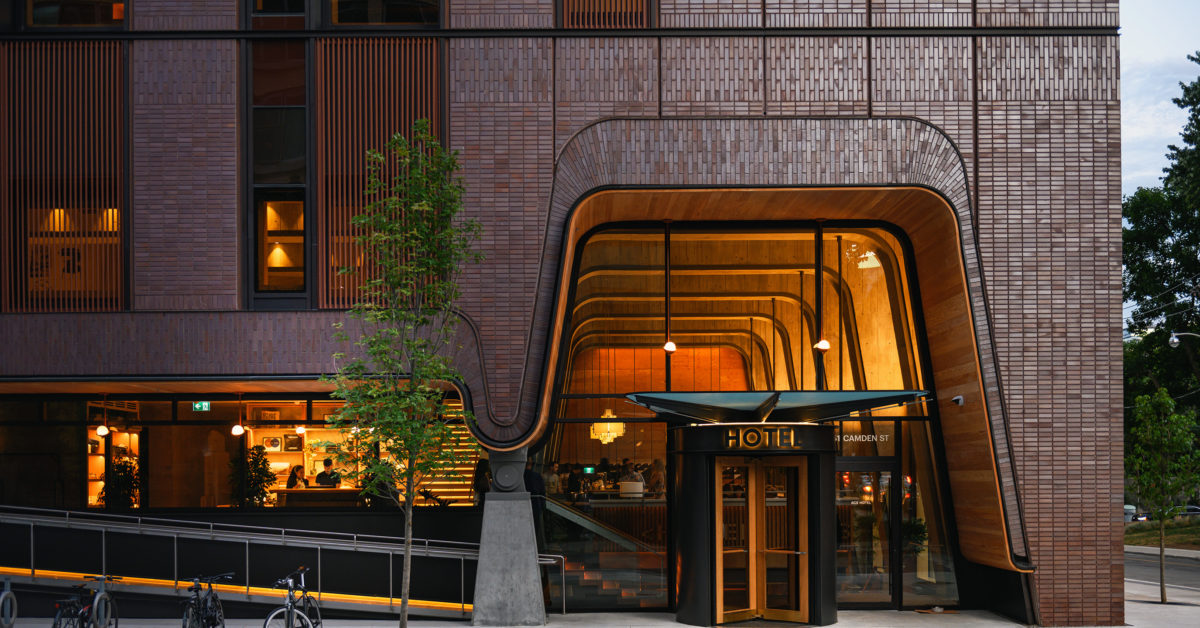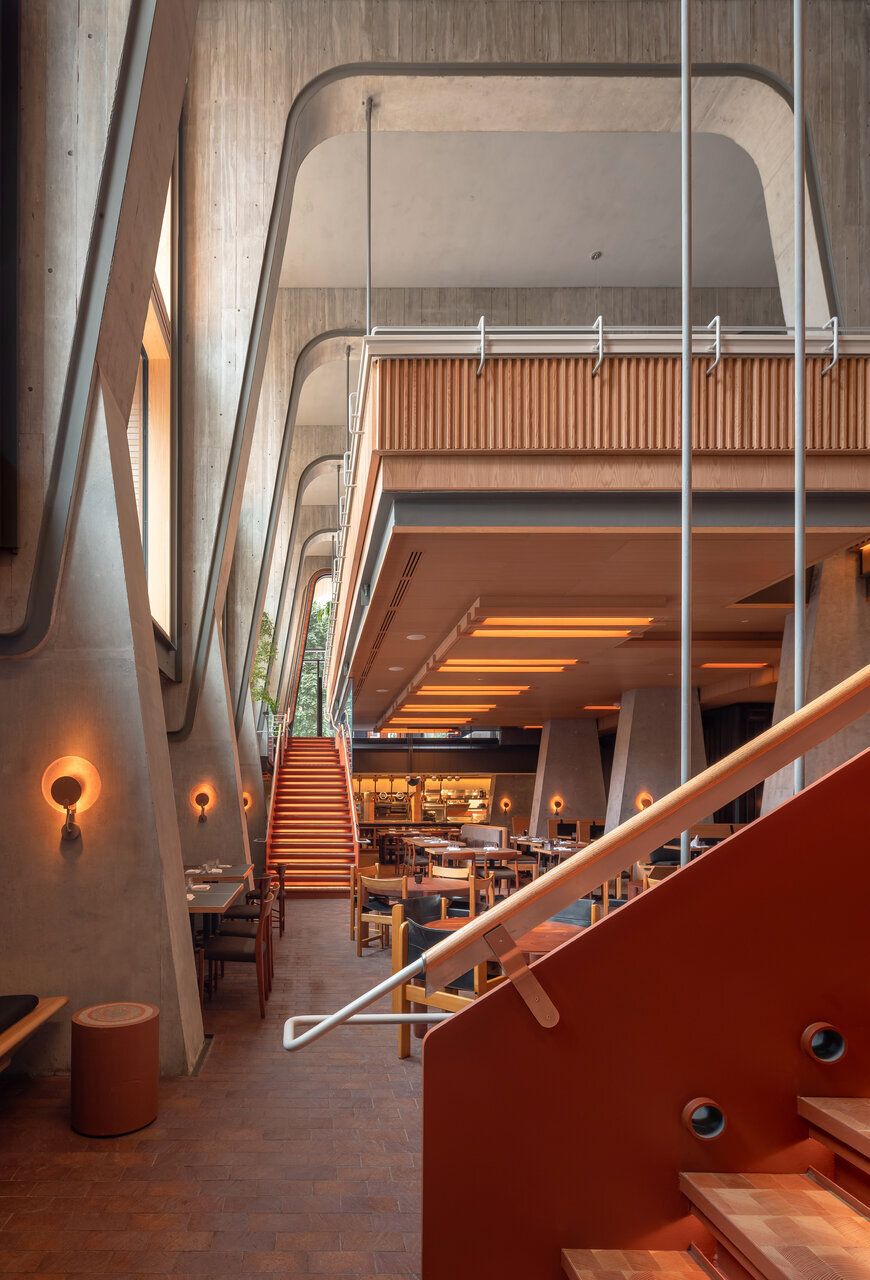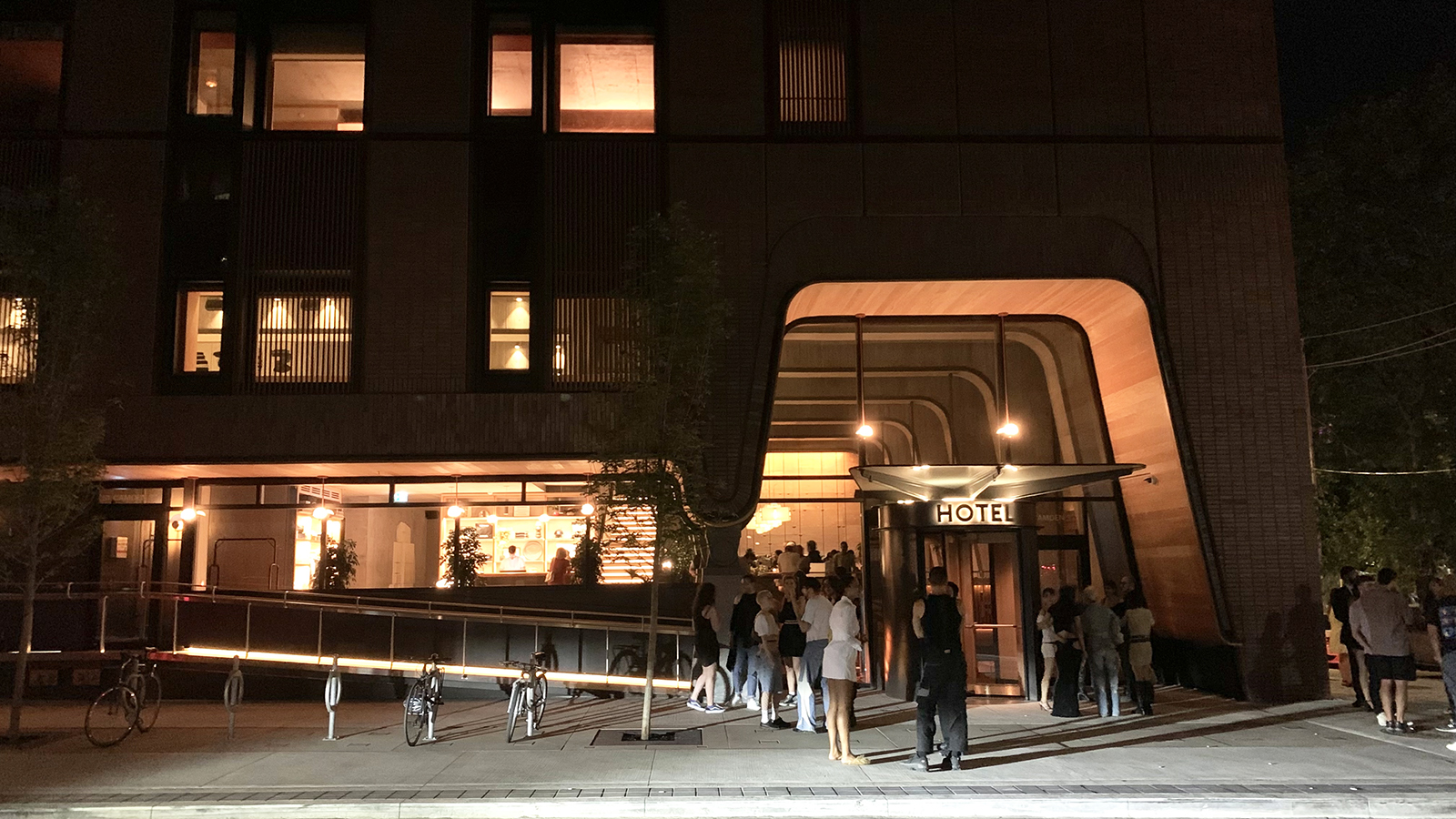You are using an out of date browser. It may not display this or other websites correctly.
You should upgrade or use an alternative browser.
You should upgrade or use an alternative browser.
Toronto Ace Hotel Toronto | 44.8m | 13s | Carbon Hospitality | Shim-Sutcliffe
- Thread starter AlbertC
- Start date
mr24
New Member
ushahid
Senior Member
WELL DONE! Carbon Hospitality and Shim. i hope they build more buildings together.
Towered
Superstar
Will I get condescending stares if I chill here in my biking booty shorts?
Rascacielo
Senior Member
Should we chip in $10 each so that 55 of us could share a room there? 
Irishmonk
Senior Member
Very, very nice. Can't wait to win the lottery so I can stay there during my Toronto visits!
UtakataNoAnnex
Senior Member
...you might get stares. Maybe not condescending ones. <3Will I get condescending stares if I chill here in my biking booty shorts?
Northern Light
Superstar
Glowing review by @AlexBozikovic:
https://www.theglobeandmail.com/art...l-brings-toronto-architecture-to-a-new-level/
If I take a staycation, it will definitely be here.
A couple of interesting bits from this article for those who may not be able to access it:
First, some elegant prose meets archi-porn:
"The other day I walked into this bar, pushed through the oak revolving doors, and entered the Ace Hotel Toronto. I climbed across finished-grain Douglas fir floors, ran my fingers across the top of a porcelain strip, and sat with a friend under a finished ceiling of Venetian stucco. The morning sun was pouring in through the oak-framed windows in front of me. I asked for a coffee."
Then, what I think are the truly important bits, how a developer and an architectural firm worked together, hand-in-hand, solving problems, 'value-engineering' of a sort, at times, yet, did so with extraordinary care than can be seen in the finished product:
"Ms. Shim stated that the relationship with Ace was “simpatico”. But she also notes that her company was involved in every aspect of the design. This is unusual. Boutique design firms like Shim-Sutcliffe generally hand their work over to colleagues, the “architects,” who solve the endless problems that come with building."
"Not here. Shim-Sutcliffe has produced thousands of drawings and watched them though. “Usually when you hire an architecture firm, you don’t have access to their managers,” says Rob Cooper of Alterra, one of the hotel’s co-owners. “Here, when we needed to solve something, Howard would show up in an hour with a notebook.”"
"This commitment has allowed Shim-Sutcliffe to innovate within commercial constraints. For example, with a brick building veneer. “We, of course, wanted to use handcrafted bricks,” Mr. Sutcliffe said. But this proved to be very costly; Instead, the facades are slabs of precast concrete with a thin layer of brick. This is a popular technique that usually looks like a bad imitation of a brick wall.
Mr. Sutcliffe chose to accentuate the segmented nature of the panels, leaving gaps, or “revealing” between them, sculpting the face pattern into synchronized shape and curves. It doesn’t quite look like a brick wall – but it does look great."
This is exactly how architecture should be practiced and development done. Not every development can afford the most expensive material, but talented people with passion and patience can make a somewhat lower cost material look just as good (or almost); we needn't reduce new buildings to the lowest common denominator to make a profit.
I'll just stick this image from @AlbertC 's post above, here, so people can see what's being discussed in terms of the brick (veneer) wall:
Last edited:
smably
Senior Member
The corrugated metal shed on the roof, I can forgive because it's not visible from the street. My main criticism of this otherwise excellent project is those gaps in the precast. To my eye, they look unfinished, and I wish that they'd filled them at least with some kind of metal trim, if not the originally specced brise-soleils.
All quibbles aside, they really nailed the interior. It doesn't get much better than this:


(rendering from the project DB, photo from today's G&M article)
All quibbles aside, they really nailed the interior. It doesn't get much better than this:
(rendering from the project DB, photo from today's G&M article)
Rascacielo
Senior Member
From Wikipedia:Very, very nice. Can't wait to win the lottery so I can stay there during my Toronto visits!
In 1999, the first Ace Hotel was opened. Friends Alex Calderwood, Wade Weigel, and Doug Herrick purchased and transformed a Seattle halfway house into an affordable hotel that would appeal to the creative class (my emphasis). Obviously, they've come a long way since then ...
AlbertC
Superstar
Toronto Life coverage on the new Ace Hotel:

 torontolife.com
torontolife.com

Inside Canada’s first Ace Hotel
Featuring local art, custom-made furnishings and rooms designed to feel like urban cabins
Our coverage on it:

 urbantoronto.ca
urbantoronto.ca
42

Visiting Toronto's New Ace Hotel | UrbanToronto
ACE Hotel recently opened its first Canadian outpost in Toronto’s King West. It sits at the meeting of Camden and Brant streets, a quiet intersection across from St Andrew’s Playground Park. Designed by Toronto’s Shim-Sutcliffe Architects, the new building has a restrained exterior with a rich...
42
AlbertC
Superstar
Red Mars
Senior Member
Aug 16, 2022




AlbertC
Superstar
A piece by Azure:
 www.azuremagazine.com
www.azuremagazine.com
The Ace Hotel Toronto by Shim-Sutcliffe is a Love Letter to the City
A masterwork by Shim-Sutcliffe Architects, the Ace Hotel Toronto celebrates the city’s cultural scene — and its brickwork fabric.
